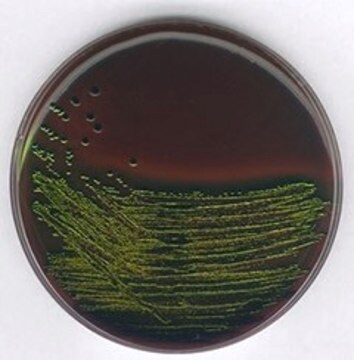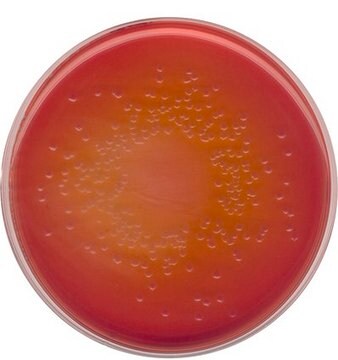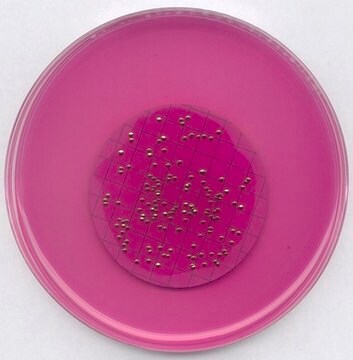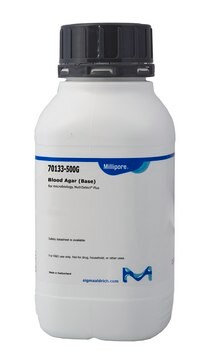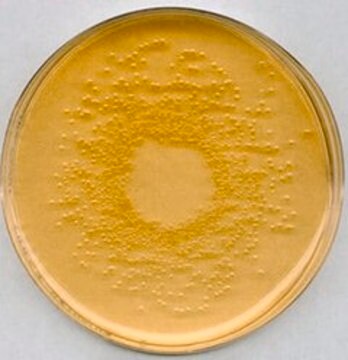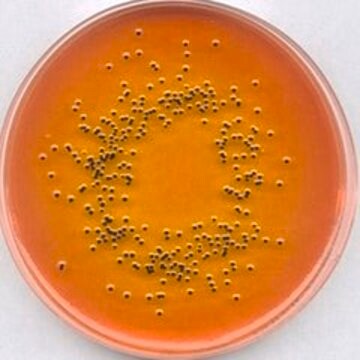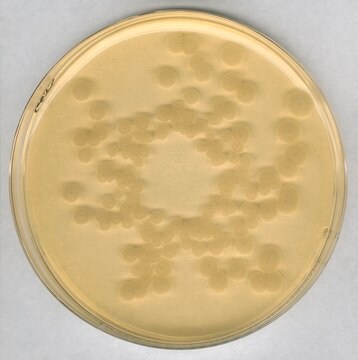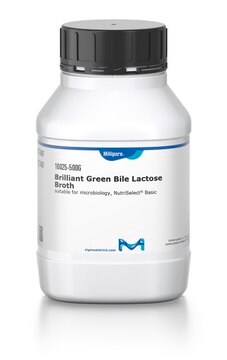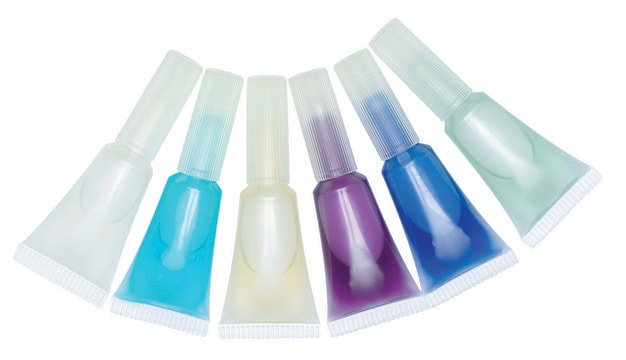Kluczowe dokumenty
E5399
Endo agar
suitable for microbiology, NutriSelect® Plus
About This Item
Polecane produkty
sterylność
non-sterile
Poziom jakości
Formularz
powder
okres trwałości
limited shelf life, expiry date on the label
producent / nazwa handlowa
NutriSelect® Plus
metody
microbiological culture: suitable
pH
7.5±0.2 (25 °C)
Zastosowanie
bioburden testing
cleaning products
cosmetics
environmental
food and beverages
personal care
veterinary
water monitoring
microbiology
przydatność
selective and differential for Enterobacter spp.
selective and differential for Escherichia coli
selective and differential for Klebsiella spp.
selective and differential for Proteus spp.
selective and differential for Salmonella spp.
selective and differential for Shigella spp.
selective and differential for coliforms
Komponenty
Peptic Digest of Animal Tissue 10.00
Lactose 10.00
Dipotassium Phosphate 3.50
Sodium Sulphite 2.50
Basic Fuchsin 0.50
Agar 15.00
Uwaga dotycząca przygotowania
Przypis
The designations basic, plus, or prime are added to indicate the quality control level, from basic quality control to standard QC plus to prime for full regulatory compliance.
Informacje prawne
Hasło ostrzegawcze
Warning
Zwroty wskazujące rodzaj zagrożenia
Zwroty wskazujące środki ostrożności
Klasyfikacja zagrożeń
Carc. 2
Kod klasy składowania
11 - Combustible Solids
Klasa zagrożenia wodnego (WGK)
WGK 2
Temperatura zapłonu (°F)
Not applicable
Temperatura zapłonu (°C)
Not applicable
Środki ochrony indywidualnej
dust mask type N95 (US), Eyeshields, Faceshields, Gloves
Wybierz jedną z najnowszych wersji:
Masz już ten produkt?
Dokumenty związane z niedawno zakupionymi produktami zostały zamieszczone w Bibliotece dokumentów.
Klienci oglądali również te produkty
Produkty
Salmonella contamination is the second leading cause of food-borne illness worldwide. Controlling outbreaks of Salmonella is an important task for food regulators, restaurants and the food industry in general. The Salmonella family includes over 2,300 serotypes of bacteria, but two types, Salmonella enteritidis and Salmonella typhimurium, are responsible for about half of all human infections. Most outbreaks of Salmonella are traced back to dairy, poultry and meat products, but Salmonella can grow on nearly any food. Chicken, eggs and their derivative products are particularly high risk.
Salmonella, z ponad 2300 serotypami, powoduje połowę chorób przenoszonych przez żywność, często z nabiału, drobiu i jaj.
Nasz zespół naukowców ma doświadczenie we wszystkich obszarach badań, w tym w naukach przyrodniczych, materiałoznawstwie, syntezie chemicznej, chromatografii, analityce i wielu innych dziedzinach.
Skontaktuj się z zespołem ds. pomocy technicznej
